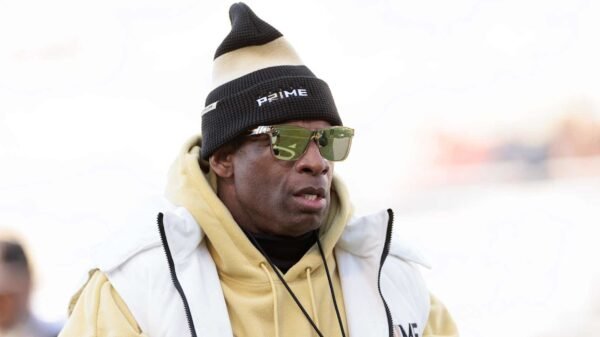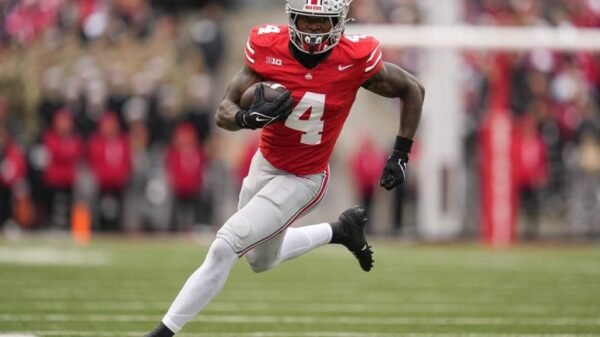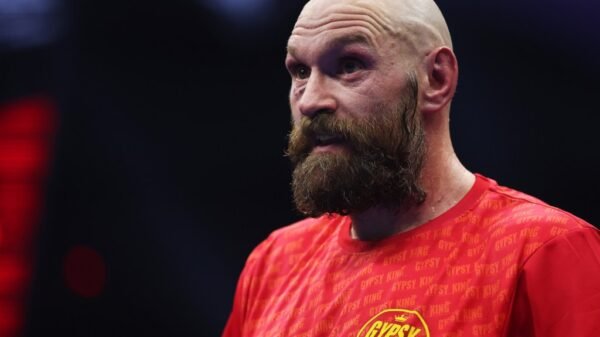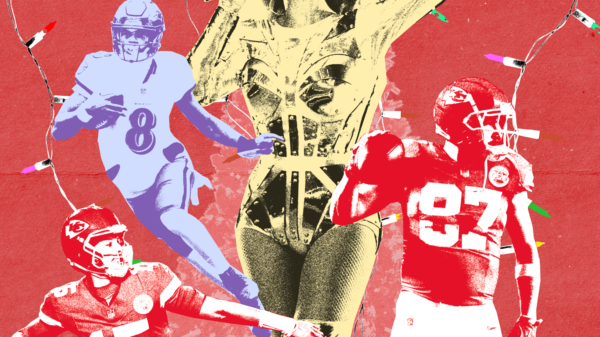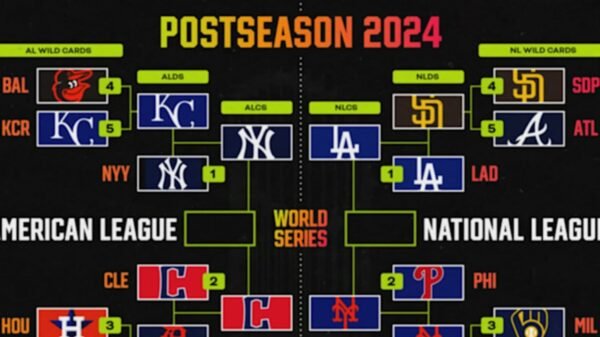The Baseball Corridor of Fame has had some type of “Veterans Committee” poll in its induction course of going all the way in which again to 1939. The committees have taken numerous types over time, however the latest course of breaks up potential candidates into three teams: Up to date Period gamers (since 1980), Up to date Period non-players, and the Basic Period, which incorporates gamers and non-players previous to 1980. The committee consists of 16 former gamers, executives, media, and historians, and gamers should get 12 or extra votes for election.
This 12 months’s poll contains eight former gamers, two of whom performed within the Negro League previous to integration. Let’s take a look at their instances and attempt to decide who ought to—and who would possibly—get introduced as a Corridor of Famer on December eighth.
Dick Allen (1963-77), 1B/3B
58.7 WAR, .292/.378/.534, 156 OPS+, 1,848 H, 351 HR, 1,119 RBI, 1972 AL MVP
Allen had a pair issues working towards his Corridor of Fame case. He was seen by the media as a malcontent and didn’t have many allies amongst writers. He was additionally at his greatest throughout a time when offense was at its lowest level because the 1910s. That makes his counting numbers look small—1,848 hits are lower than Vinny Castilla, and 351 homers are lower than Carlos Lee.
However dig just a little deeper, and also you’ll discover that Allen was a prodigious slugger. He was a really affected person hitter, he flashed pace early in his profession, and he had huge energy; he twice led his league in homers and completed second with 40 in 1966.
Allen’s mixture of energy, common, and on-base expertise meant he led the league in OPS 4 instances. His large profession 156 OPS+ ranks twenty first all time amongst retired gamers, forward of Willie Mays, Manny Ramirez, and Jeff Bagwell, to call a couple of.
Ken Boyer (1955-69), 3B
62.8 WAR, .287/.349/.462, 116 OPS+, 2,143 H, 282 HR, 1,141 RBI, 1964 NL MVP
Throughout Boyer’s seven-year peak in St. Louis (1958-64), he had a .303/.372/.500 batting line and averaged 6.4 WAR, 26 homers, and 101 RBI per season. He was by all accounts a wonderful fielder (trendy metrics like him, and he received 5 Gold Gloves between ’58 and ’63) and he was the 1964 MVP for the pennant-winning Cardinals.
By my rely, Boyer is likely one of the prime 15 third basemen ever, and with Adrián Beltré’s induction in 2024, everybody else I’d put forward of him is already in.
John Donaldson (1908-40), P
Donaldson is a type of legendary determine from the difficult-to-track panorama of the primary half of the twentieth century. He’s much more tough to evaluate as a result of he performed solely briefly within the official Negro Leagues, with the Kansas Metropolis Monarchs for 5 years from 1920-24. However, bizarrely, he barely pitched with the Monarchs and spent most of that point as a serviceable outfielder.
That temporary tenure doesn’t even start to scratch the floor of Donaldson’s profession. All through the 1910s, he starred for quite a lot of barnstorming groups, and there aren’t any scarcity of legends round him throughout this time, like a 27-strikeout recreation, or a season wherein he was 44-3. After his five-year stint with the Monarchs, he continued to pitch within the higher Midwest and in Canada, typically as the one Black participant on the workforce, till he was in his late 40s.
A lot of this was achieved towards beginner opposition, making Donaldson’s case exhausting to guage in a conventional sense. However he labored via all kinds of racial oppression to change into a prototype for Satchel Paige, in that he was a legendary pitcher but additionally an excellent showman who might please a crowd (and enhance his paycheck).
Steve Garvey (1969-87), 1B
38 WAR, .294/.329/.446, 117 OPS+, 2,599 H, 272 HR, 1,308 RBI, 1974 NL MVP
That is the fifth time that Garvey has been on a Veterans Committee poll. Whereas I feel it’s in all probability time to present another person an opportunity, there are clearly individuals in highly effective positions who need Garvey within the Corridor.
On the floor, it is sensible. Garvey was one of many main figures of the Nineteen Seventies. He made eight consecutive All-Star groups, received 4 straight Gold Gloves, and received the NL MVP in 1974 and was runner-up in 1978. He was an iron man who performed in 1,207 consecutive video games—nonetheless the Nationwide League file—and he had not less than 200 hits in six of seven seasons between 1974 and 1980, with league-leading totals in two of these years. He was a postseason star who was the MVP of the NLCS twice and was a lifetime .338/.361/.550 hitter in 55 playoff video games.
However trendy stats have diminished Garvey’s star a bit. He has solely 38 WAR through Baseball Reference, a quantity that ranks decrease than fellow first basemen Kent Hrbek and Mark Grace. Defensive metrics are skeptical of his Gold Gloves. And Garvey didn’t stroll a lot and didn’t hit for the kind of energy usually related to star first basemen, so his OPS doesn’t evaluate nicely to the large stars on the place.
Dave Parker (1973-91), RF
40.1 WAR, .290/.339/.471, 121 OPS+, 2,712 H, 526 2B, 339 HR, 1,493 RBI, 1978 NL MVP
Parker, the Cobra, has extra hits than Billy Williams, Nellie Fox, and Ted Williams, extra homers than Hank Greenberg and George Brett, and extra RBI than Eddie Mathews and Jim Rice. He’s obtained an excellent peak: he had three top-three MVP finishes in 4 years from 1975-78 (with a win in 1978), and he was excellent in 10 video games within the Pirates’ profitable 1979 postseason run. After his age-28 season, he regarded like a Corridor of Fame lock.
However Parker obtained tied up in medication and the 1985 Pittsburgh drug trials and his efficiency suffered badly within the first half of the Nineteen Eighties, when he ought to have nonetheless been in his prime. He did bounce again later in his profession; at 34 years outdated he had a renaissance season for the Reds in 1985 wherein he led the league in doubles and homers and completed second in MVP voting, and later he had some stable counting numbers for the Athletics and Brewers.
However superior metrics should not type to Parker. He’d been a deserving Gold Glove outfielder early in his profession, however his protection within the ‘80s was an atrocity earlier than a swap to DH in 1988. He was stroll averse and had only a .322 OBP from 1980-91, and he had one or much less bWAR in 9 of these 12 seasons.
He’s a polarizing case; huge numbers, Corridor-of-Fame expertise, however many squandered years in the midst of his profession. Clear Corridor-of-Fame nickname, although.
Vic Harris (1922-47), OF/Supervisor
Harris was an excellent outfielder and spent a lot of his profession because the player-manager of the Homestead Grays, with whom he was a participant from 1935-45 and supervisor for 11 years between 1936 and 1948. The Grays received three Negro League World Sequence and 9 Negro Nationwide League pennants with Harris on the helm, and he was a six-time All-Star as a participant.
Harris’s taking part in profession alone wouldn’t be sufficient to place him within the Corridor, however whenever you mix it along with his work because the supervisor of the second NNL’s most profitable franchise, there’s a really compelling case.
Tommy John (1963-89), SP
61.6 bWAR/79.4 fWAR, 288-231, 3.34 ERA (111 ERA+), 3.38 FIP, 2,245 Ok
John is most well-known for the medical process that bears his identify, which he had when he was 31 in 1974. He ended up taking part in till he was 46.
While you pitch that lengthy, you compile plenty of numbers—his 288 wins are essentially the most for any participant after 1900 who just isn’t within the Corridor of Fame. The argument towards John is that he didn’t have a robust sufficient peak. He did put up 4 straight top-eight Cy Younger Award finishes within the late Nineteen Seventies, however he by no means had a season price greater than 5.6 bWAR. Fangraphs is a bit sunnier on John, a very good management pitcher who threw a sinker that induced plenty of weak contact and restricted homers. His profession mark of 79.4 fWAR is certainly close to a Corridor of Fame stage, and his greatest season through Fangraphs is a extra respectable 6.9 WAR.
Luis Tiant (1964-82), SP
66.1 bWAR/54.8 fWAR, 229-172, 3.30 ERA (114 ERA+), 3.47 FIP, 2,416 Ok
Tiant sadly simply handed away final month. He was a joyful participant, an actual character with a number of the greatest facial hair in baseball historical past. However don’t let that overshadow how good he was.
In 1968, Tiant didn’t get any Cy Younger votes as a result of Denny McLain received 30 video games, however whenever you look with trendy eyes, Tiant was the very best pitcher within the AL that season, wherein he led his league in ERA, shutouts, FIP, and H/9.
Tiant’s profession didn’t comply with a conventional arc, and he went via the wilderness a bit over the subsequent few seasons earlier than discovering himself once more in Boston in 1972, when he received his second ERA title. He had two prime 5 Cy Younger finishes over the subsequent few years and had an enormous postseason in 1975.
Regardless of his twisty profession path, Tiant completed with 229 wins and a 114 ERA+, which for comparability is extra wins than Catfish Hunter and a greater ERA+ than Nolan Ryan.
Who will get in?
I’d put these gamers in three teams, and I’ll right here level out that I’m a “huge Corridor” particular person. To me, Allen, Tiant, and Boyer (in that order) are gamers that I might put within the Corridor of Fame purely on their taking part in careers. Harris, Donaldson, and John are gamers whose complete tales make them figures who deserve enshrinement. Parker and Garvey, for me, fall a bit brief.
However every member can vote for less than three individuals (making the mathematical max 4 inductees), and the baseball world appears extra aware of placing in gamers who’re nonetheless with us (which, on this group, contains solely Parker, Garvey, and John). Realizing the historical past of those committees, my official guess is that Donaldson, John, and Allen—who was one vote brief in 2015 and 2022—will get in.




